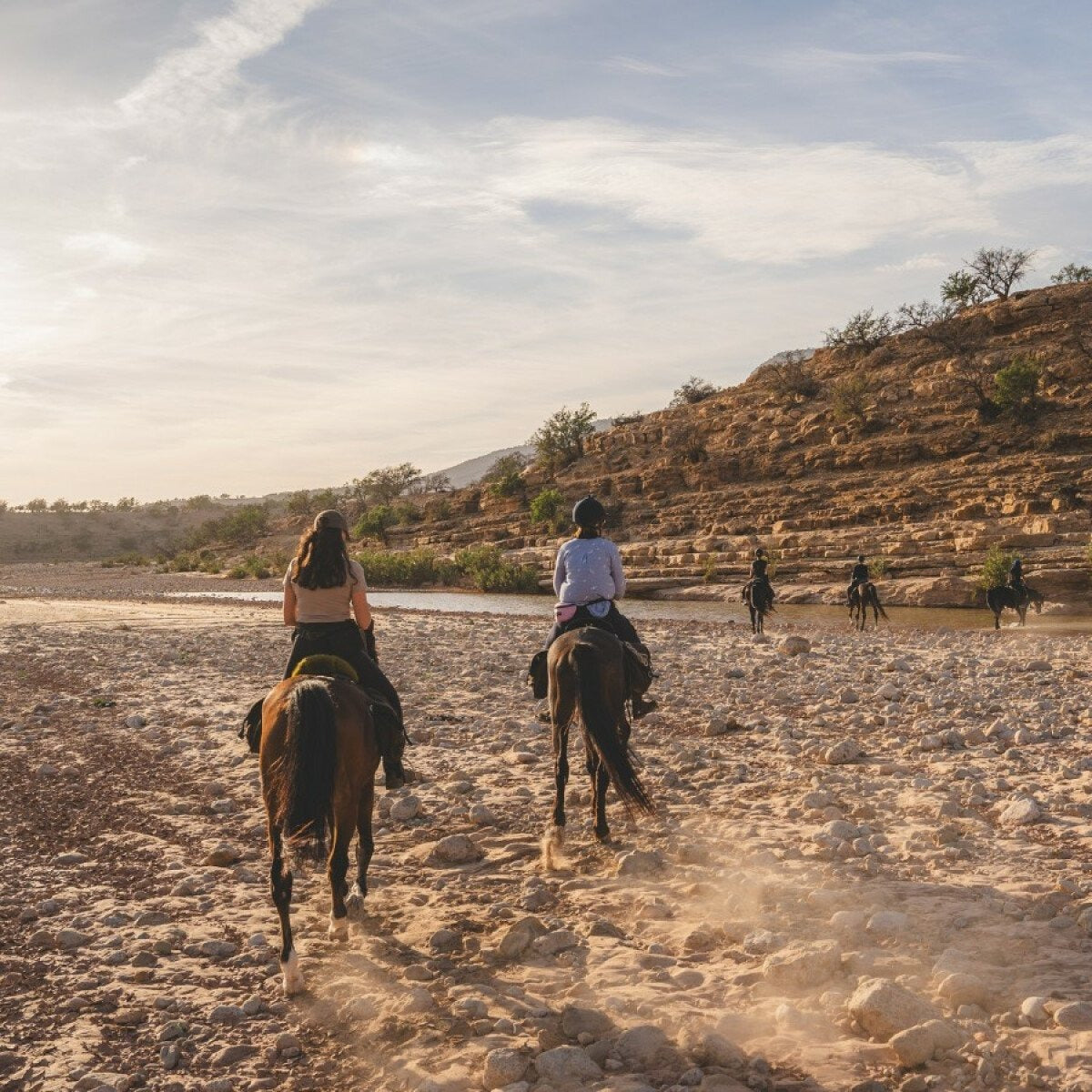Trekking in Morocco: What to Wear
As always when trekking, it's advisable to dress in layers. Morocco is a very diverse country, ranging from the mild climate of the beaches (which can, however, be very humid and with significant nighttime temperature variations) to the dry desert climate, all the way to the Toubkal mountains, which, at over 4,000 meters, are the highest peak in Morocco and all of North Africa. Toubkal can be climbed year-round (with a guide required), and if traveling in winter, crampons and ice axes are essential (which can be rented or purchased in Imlil, the starting base camp).
Aside from this extreme case, some trekking clothing tips are always valid even in Morocco: technical clothing that promotes skin perspiration and dries quickly, a waterproof k-way to protect from wind and rain, a 100-gram down jacket for cool nights, bandanas to protect from the wind (which can be strong), and everything necessary for protection from the sun (hats, sunglasses, and sunscreen).
Shoes should be comfortable, provide ankle protection, and preferably have non-slip soles (such as Vibram) to make walking easier, even on rocky terrain. If you plan to walk in the desert, gaiters can be useful to prevent sand from entering your shoes (and any other accessory that prevents sand from entering between your clothing and your skin).
NB: There are Decathlon stores in Morocco (which also have a website where you can shop online), so if you need anything, you can find it there.
Trekking with a Moroccan bivouac: how to do it?
Moroccan law prohibits bivouacking independently or outside of campsites: to enjoy this experience, you must request formal authorization at least two weeks in advance. We recommend using local agencies. At Ranch de Diabat, we also organize and set up bivouacs with all the necessary amenities (including bathrooms).
If you'd like to learn more, we've explained more about how a bivouac is set up and how it works in an article dedicated to the Moroccan Bivouac . After submitting the travelers' documents, we'll take care of obtaining all the necessary permits from the relevant authorities.
It is also possible to stay in more luxurious fixed bivouacs, in the rocky desert of Agafay, not far from Marrakech, or in the most famous deserts of the Sahara (Zagora and Merzouga) where you can enter to experience total immersion in the desert.
What are the bathrooms like in Morocco?
Overall, the hygiene and quality of bathrooms are gradually improving, especially in more populated areas. For example, there are more and more restrooms along main roads (it's always good manners and custom to leave a small tip for those who clean the bathrooms: this gesture can also support women's emancipation, given that the bathrooms are often run by women who live in rural villages).
In less frequented areas, however, the bathrooms are still decidedly "simple" (for example, open-air squat toilets): the advice for those going trekking is to equip themselves with wet wipes, hand sanitizer, paper tissues or toilet paper and also a good dose of patience ;-)
Trekking in Morocco: How to Handle Unexpected Problems
We always recommend purchasing travel insurance before departure to cover unforeseen events, illnesses, and the potential need to cancel your trip or return home early. If you have any health problems, Moroccan healthcare costs are high, so insurance coverage is doubly recommended.
Intranet coverage during the trek
Internet coverage is widespread almost everywhere, and in many areas there's even fiber optic internet. While the highest and most remote mountain peaks may lack connectivity, even in the areas where the Ranch accompanies tourists on foot or horseback, the network is increasingly available, even during the five-day, five-night desert trek (with only one day without coverage). It's still recommended to download maps and GPS tracks to make them accessible offline. You can learn more by reading the article "How to Plan a Trip to Morocco." .
Organized trekking in Morocco
To climb the highest mountains, it is mandatory to be accompanied by a guide: we recommend you ask for information at the "Bureau des guides" located in all the mountain areas where the trekking trails begin.
Be aware, however, that in Morocco, maps are generally not as widespread as in Europe, and trails are not marked. Even where it isn't mandatory, it's advisable to hire an experienced, official guide (identifiable by their guide ID badge).
The safest option is to join treks organized by qualified operators and with expert guides: if you need advice, you can ask us at Ranch de Diabat. You can find some hiking suggestions in Essaouira on our website, or contact us to organize the experience best suited to your tastes and needs.







